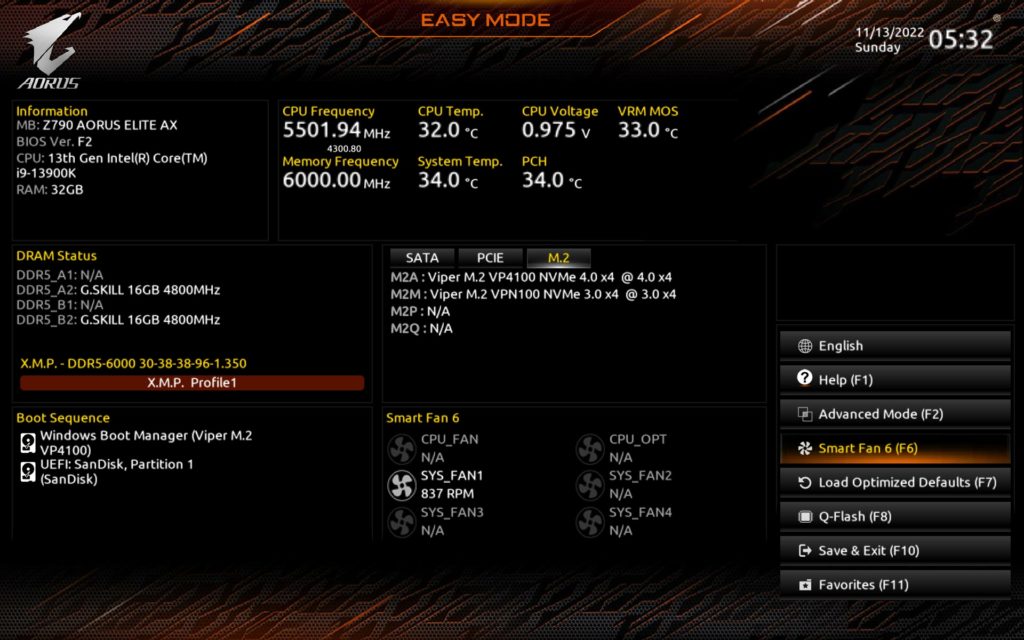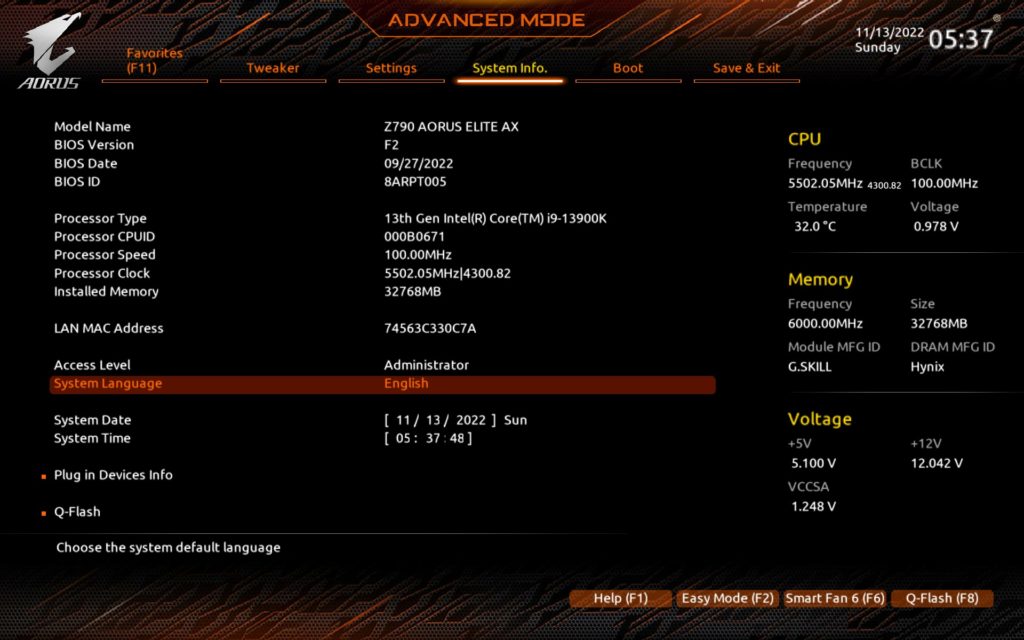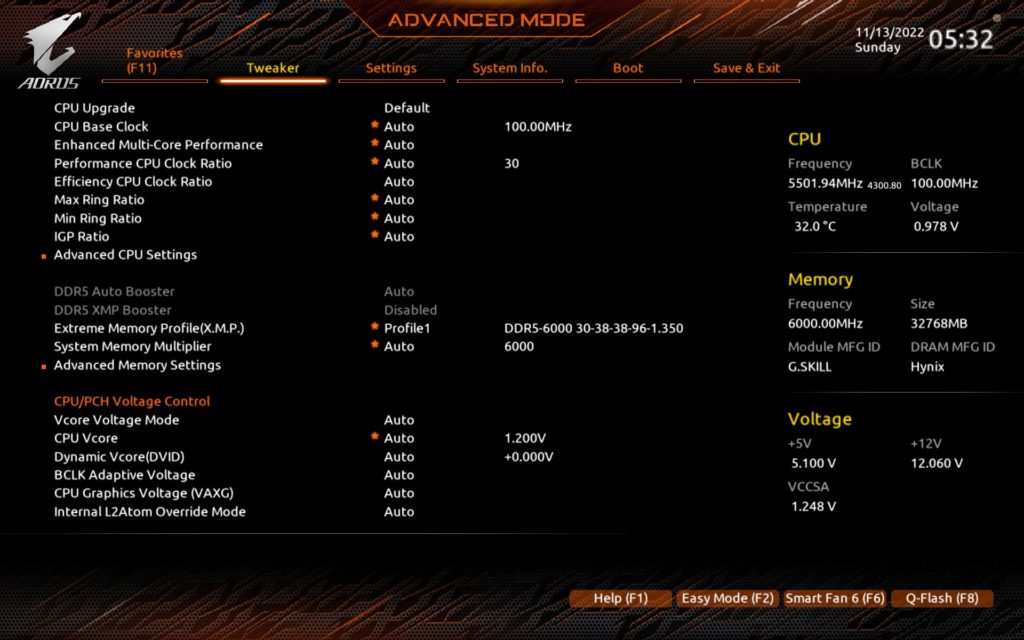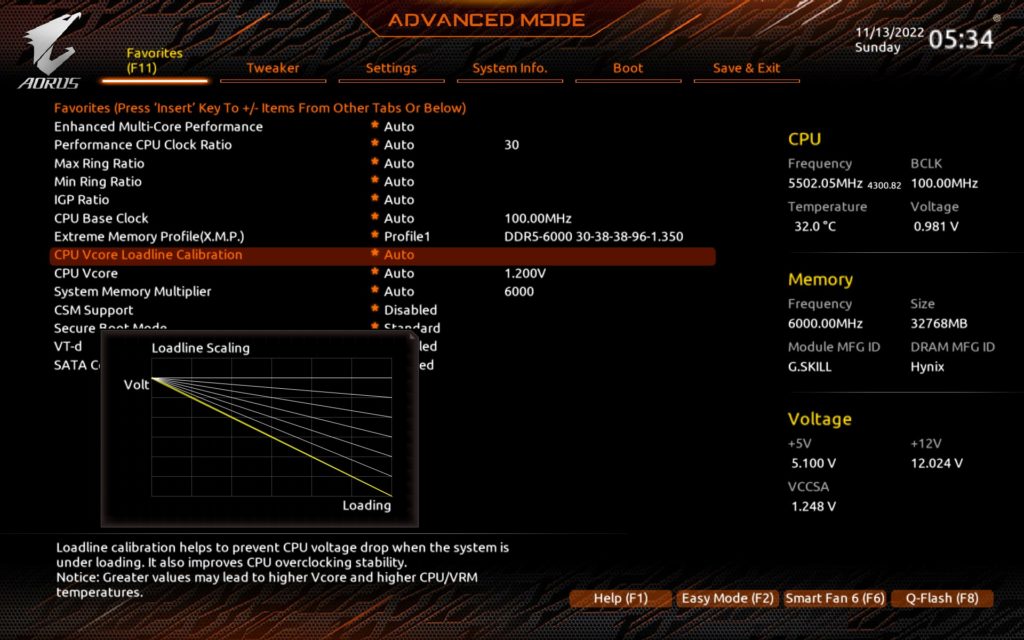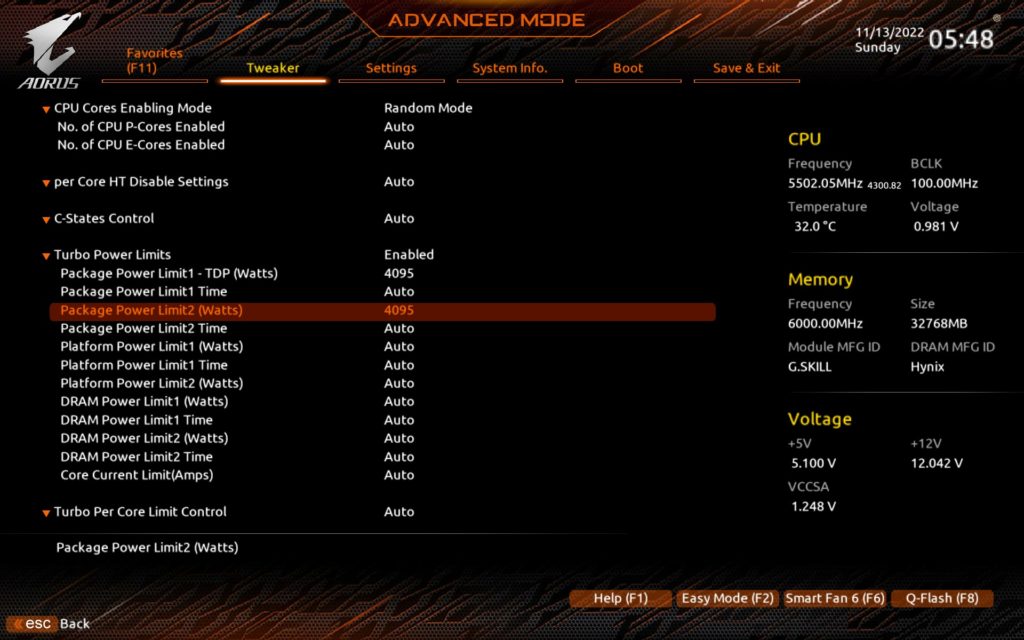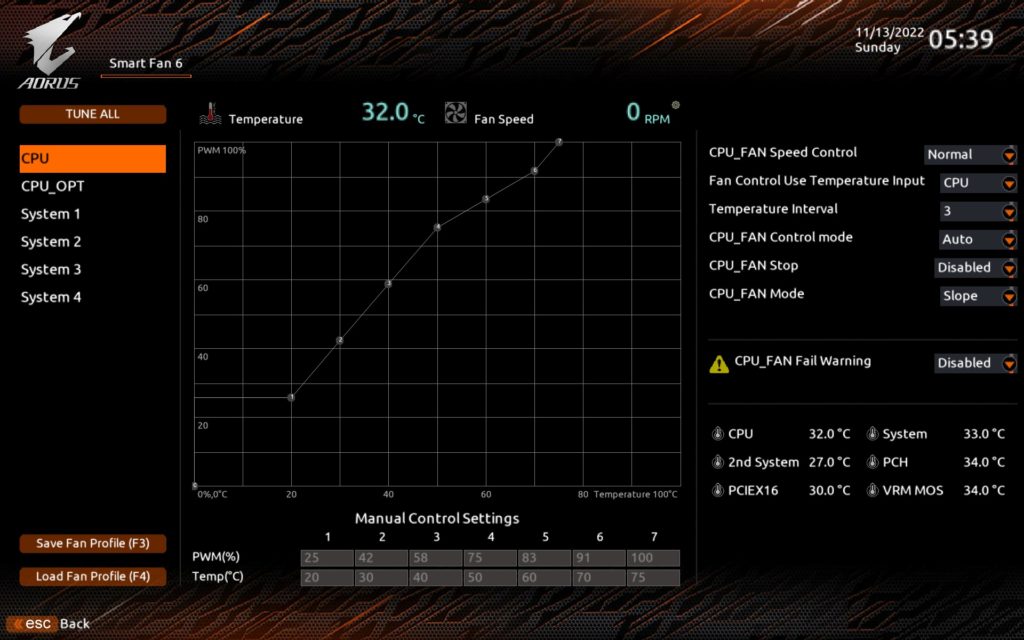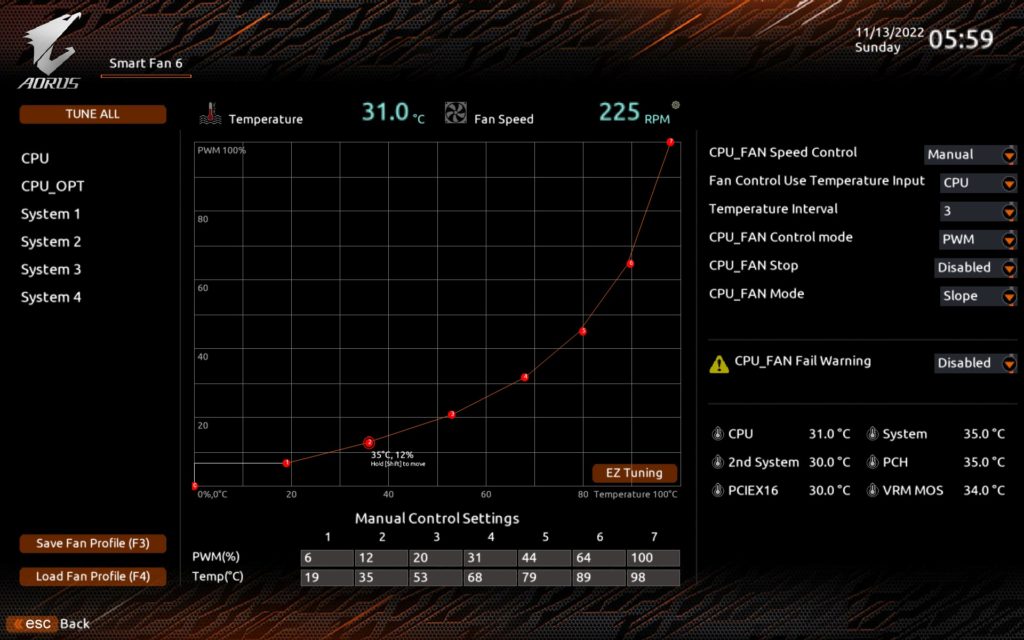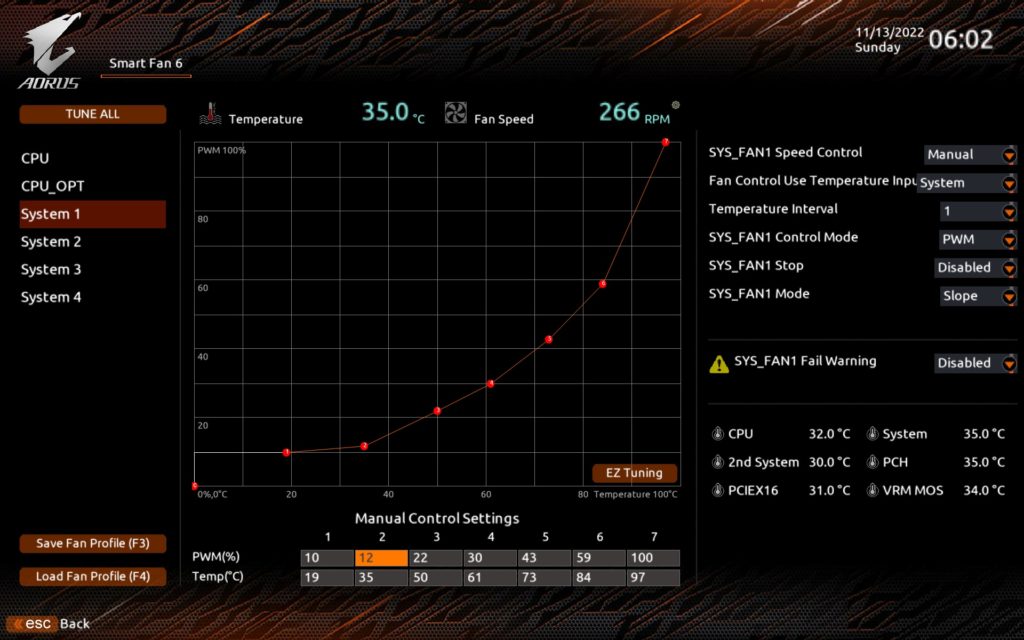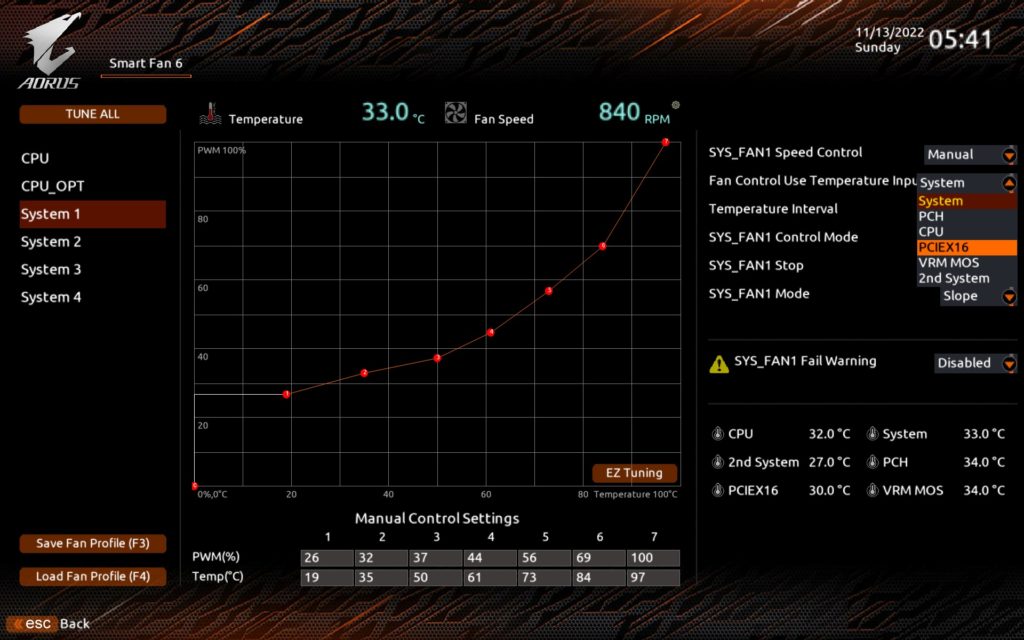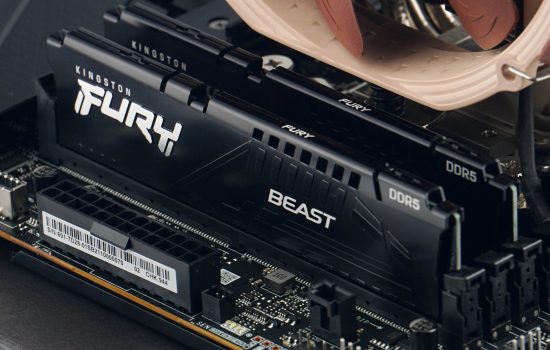What it looks like in the BIOS
With motherboards, we don’t like to write about “gaming” hardware. They usually have virtually no effect on gaming performance. In this case, however, there is something to the marketing slogan, although not for free, and in some cases the higher performance is paid for by higher power draw in games. However, there are naturally more reasons to care about or, on the contrary, to avoid the Gigabyte Z790 Aorus Elite AX.
What it looks like in the BIOS
After entering the UEFI, a complete overview of the components that are connected to the motherboard is provided. For SSDs, this includes the interface and the number of PCI Express lanes connected. From this “Easy Mode” screen it is also possible to go into the detailed fan settings (F6), proceed to a BIOS update (F8) or via the F2 key to select a mode with more advanced options.
In extended mode, in addition to reading and setting XMP, manual adjustment of bandwidth or memory timing is also possible. However, we always test in XMP mode. We leave LLC in automatic mode (you can adjust it, however) and only disable Resizable BAR in order to achieve the most consistent results across tests. The latter is already enabled by default on the vast majority of new boards, which was still sporadic on previous generations.
Power supply management is available under the “Tweaker” tab – Turbo Power Limits. The PL1/PL2 values can be manually set in units of W and the time interval during which, for example, short-term performance should be achieved can also be set. However, the set time cannot be relied on too much as it does not correspond to real time. The power draw (and with it the computational power) drops significantly earlier than you set it, which can be well seen from the graphs.
The Thermal Velocity Boost (TVB) tab shows how the multiplier is set for the individual P cores. On two of them, it is 5.8 GHz (i.e. the maximum clock speed for a single-core boost of the Core i9-13900K CPU). And why not on a single one if it’s a single-core boost? For the reason that in practice, two cores participate or alternate on a single-core workload as well.
The Gigabyte Z790 Aorus Elite AX also has a security (de)encryption module (TPM) whose settings can also be customized. And among the things you’ll encounter at the beginning (and then probably not so much after that) is the BIOS update interface, Q-Flash. Uploading a new BIOS is intuitive and secure. An incorrect BIOS isn’t visible to the board, and there’s still a BIOS flashback function in case something accidentally goes wrong during the writing process.
Gigabyte calls the fan management interface Smart Fan 6. Last time we mentioned that on some connectors, the fans run from higher speeds than their minimum speeds. This happens here as well, but practically only in “auto” mode, which seems to fail to properly detect the PWM fan and tries to regulate it with linear voltage (DC). Therefore, it is important to set the PWM mode manually when using a 4-pin fan with pulse control.
The pulse generator on the system fan connectors is qualitatively a bit “worse” than for the CPU_fan connector, but you can comfortably and stably reach the lower speed limit of the fans.
The board has multiple temperature sensors that you can work with to create PWM curves. These may not be based on CPU temperature, but on temperatures around the PCI Express ×16 slot, for example. The system fans can thus react appropriately to the cooling with respect to the graphics card load.
- Contents
- Gigabyte Z790 Aorus Elite AX in detail
- What it looks like in the BIOS
- Methodology: Performance tests
- Methodology: How we measure power draw
- Methodology: Temperature and frequency measurements
- Test setup
- 3DMark
- Borderlands 3
- F1 2020
- Metro Exodus
- Shadow of the Tomb Raider
- Total War Saga: Troy
- PCMark and Geekbench
- Web performance
- 3D rendering: Cinebench, Blender, ...
- Video 1/2: Adobe Premiere Pro
- Video 2/2: DaVinci Resolve Studio
- Graphics effects: Adobe After Effects
- Video encoding
- Audio encoding
- Photos: Adobe Photoshop, Affinity Photo, ...
- (De)compression
- (De)encryption
- Numerical computing
- Simulations
- Memory and cache tests
- M.2 (SSD) slots speed
- USB ports speed
- Ethernet speed
- Power draw without power limits
- Power draw with power limits by Intel
- Achieved CPU clock speed
- CPU temperature
- VRM temperature – thermal imaging of Vcore and SOC
- SSD temperature
- Chipset temperature (south bridge)
- Conclusion






